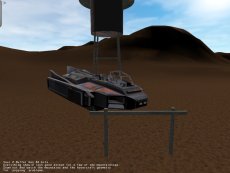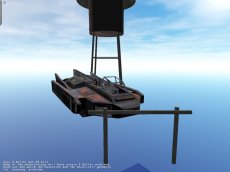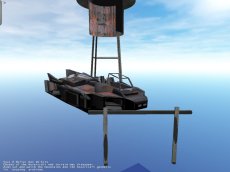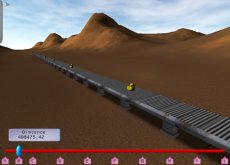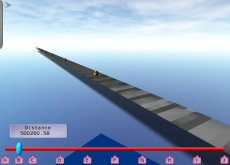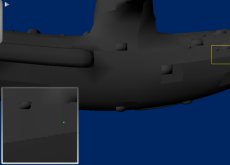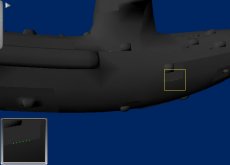While the SPECviewperf numbers illustrates that the Wildcat III is far better at coping with scenes with very high geometric complexity, there is, however, another element that is of paramount importance for a board of Wildcat’s target audience: Accuracy. To coin a phrase from 3Dlabs Tim Lewis:
Right Pixel, right colour, right place.
3Dlabs have produced the technology demonstration 'PixE-3D' that explores various features of the Wildcat boards capabilities, however a number of these look specifically at rendering accuracy and IQ. Although all these demo's are obviously designed to show the Wildcat in the best light its worthwhile taking a look at some of the outputs to gain an idea in where some of the rendering accuracies can be greater on a high end board such as the Wildcat III.
This first set of images illustrate the difference a high precision Z-Buffer can have on the rendered output:
By default Wildcat III will render with a 32Bit Z-Buffer, as illustrated by the top image. The bottom two images are the outputs from the Radeon - in both cases, for some reason the floor and background mountains are missing -- whether this is due to the Z-Buffer depths or some kind of issue with ATi's HyperZ scheme is unclear; what is clear is that this is a rendering error! However, that aside we can see that the rendering of the craft with the 24bit Z-Buffer does appear to be OK, with no serious errors, in 16bit mode though we can see that the craft has sever errors and large chunks are missing or parts that shouldn't be visible are overlaid parts that should be. It should be noted that, ground and mountain aside, the errors displayed in the 16bit Z-Buffer image are not necessarily particular to Radeon, but just due to the low accuracy of any 16bit Z-Buffer.
The following images from the PixE demo are designed to highlight any texture precision issues:
In this test we can see that the textures on the conveyor belt are not rendered correctly by the Radeon 8500. Also, again, the Radeon does not appear to be able to render the terrain for some reason.
This demonstration highlights the sub-pixel accuracy of a card:
The submarine model in this demo is designed such that cards with a lower subpixel accuracy will suffer from rounding errors which will appear as gaps in adjacent polygons on the model; in motion these gaps appear as pixel pops, and the more there is the more distracting the rendered image becomes. You can see in the case of the WildcatIII there are still few pixel pops visible, but these are greatly reduced when looking in comparison to the Radeon.
When you consider the types of applications that a board such as Wildcat III is being used for then if rendering isn’t accurate then unpredictable results are could occur further down the line. For instance, if at some point something physical is going to be made based on what is rendered then its best that whatever is rendered is as accurate as possible so that the final physical output actually fully represents what was initially intended, or if something is being made to a customers particular specifications and is rendered on a computer to give them an idea of what the finished product will look like then the displayed image needs to represent reality as much as possible.
Another element of overall quality is of course Antialising - the 'jaggies' produced in 3D rendering as a result of under sampling can be very detrimental it the look of the final rendered image and can produce distracting effects, which is why FSAA can be very important for a Workstation card such as Wildcat III. Wildcat has what 3Dlabs call 'SuperScene' AntiAliasing which is what we'll take a slightly deeper look at next.

